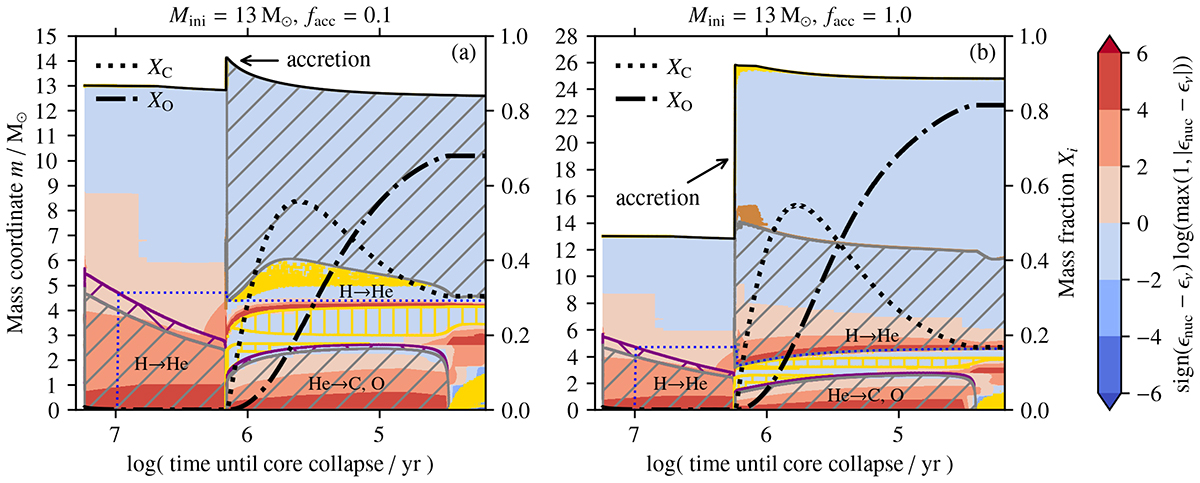Fig. 2.

Download original image
Kippenhahn diagrams with initial 13 M⊙ early Case B systems accreting (a) 10% and (b) 100% of their initial mass. The moment of mass accretion is indicated by an arrow. Energy generation by nuclear burning, ϵnuc, and loss by neutrinos, ϵν, are colour-coded. The right y-axes show the mass fractions of carbon, XC, and oxygen, XO, in the centre of the stars. Carbon starts being produced when core helium burning begins. The grey hatched areas show convective regions, purple hatchings are for convective overshooting, yellow stands for thermohaline mixing and brown is for semi-convection. The dotted blue lines show where the hydrogen mass fraction drops below 0.5, that is they trace the helium core mass. Hydrogen shell burning in the facc = 0.1 model is radiative and the star evolves into a CSG. In the facc = 1.0 model, hydrogen shell burning proceeds convectively and the star evolves as a BSG (cf. Fig. 1).
Current usage metrics show cumulative count of Article Views (full-text article views including HTML views, PDF and ePub downloads, according to the available data) and Abstracts Views on Vision4Press platform.
Data correspond to usage on the plateform after 2015. The current usage metrics is available 48-96 hours after online publication and is updated daily on week days.
Initial download of the metrics may take a while.


